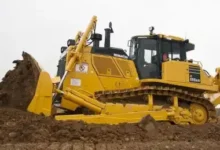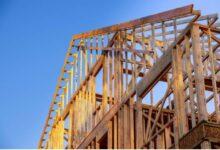
15 Types of Heavy Construction Equipment and Their Uses
Massive machines perform the hardworking tasks that drive the construction of roads, buildings, bridges, and infrastructure. Heavy equipment is specially engineered to execute the digging, lifting, moving, and earthmoving demands of large construction and civil engineering projects.InformationGuideNigeria
The 15 Types of Heavy Construction Equipment and Their Uses
Examining 15 common types of heavy construction equipment and their critical uses spotlights these machines’ indispensability:
👉 Relocate to Canada Today!
Live, Study and Work in Canada. No Payment is Required! Hurry Now click here to Apply >> Immigrate to Canada1. Excavators
Excavators utilize a bucket, arm, and boom to dig holes and trenches, lift heavy objects, or move earth and debris with incredible power and precision. The operator sits in a cab atop a pivot and can rotate the upper section 360 degrees for excellent maneuverability and control.
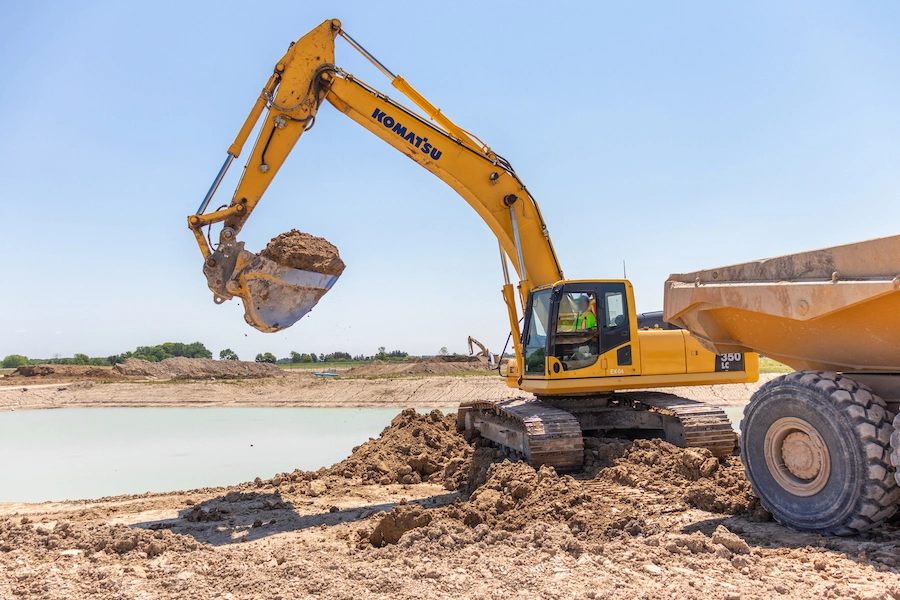
Uses:
- Trenching for infrastructure like pipelines and cables
- Digging out foundations
- Grading landscaping
- Loading trucks
- Demolition
- Forestry work like uprooting stumps
- Material Handling
- River dredging
- Attachment use like breakers for breaking up concrete and rock
Different sizes range from compact mini excavators to massive units with over 500 horsepower and 80-ton weight capacity. Tracked excavators work well on soft ground, while wheeled models excel on hard, flat surfaces.
Read Also: Top 15 Ships with the Largest Cargo Capacity
2. Backhoes
Backhoes consist of a front-mounted shovel bucket connected to the chassis by two mechanical arm sections. The articulated backhoe arm extends out to allow digging off to one side or rear.

Uses:
- Trenching for plumbing, electrical, drainage
- Digging foundations
- Lifting and loading materials
- Minor grading and earthmoving
- Breaking up pavement
- Pipe laying in trenches
- General utility work with a scoop bucket
Backhoes provide excellent mobility and versatility with the ability to dig, scrape, lift, load, and more. Average digging depths range from 15-20 feet depending on model size.
3. Bulldozers
Bulldozers utilize a thick, reinforced steel blade or push plate on the front to push, flatten, and clear terrain or other obstacles. The tracks provide continuous contact with the ground for immense traction.
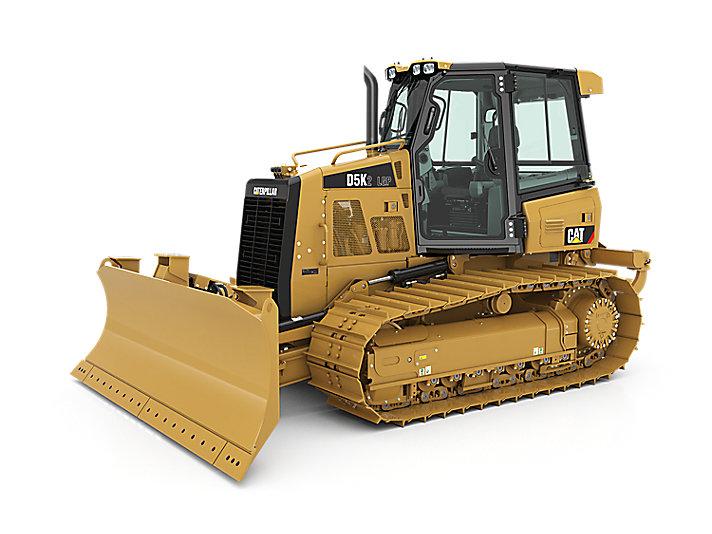
Uses:
- Clearing land and brush
- Flattening ground and terrain
- Cutting into rocky areas in mining
- Pushing over trees or buildings in demolition
- Spreading dirt, gravel, or loose material
- Filling in holes or depressions
- “Ripper” attachments penetrate and break up hard earth
- Snow removal by pushing large amounts
Bulldozers represent essential productivity machines for all types of major earthmoving, grading, landscaping, and civil projects.15 Types of Heavy Construction Equipment and Their Uses
4. Compactors
Compactors densify and settle material through vibrations and pressure applied by a heavy, weighted drum, oscillating plate, or pneumatic tires. This compacts layers of fill, soil, or paving materials.
👉 Relocate to Canada Today!
Live, Study and Work in Canada. No Payment is Required! Hurry Now click here to Apply >> Immigrate to Canada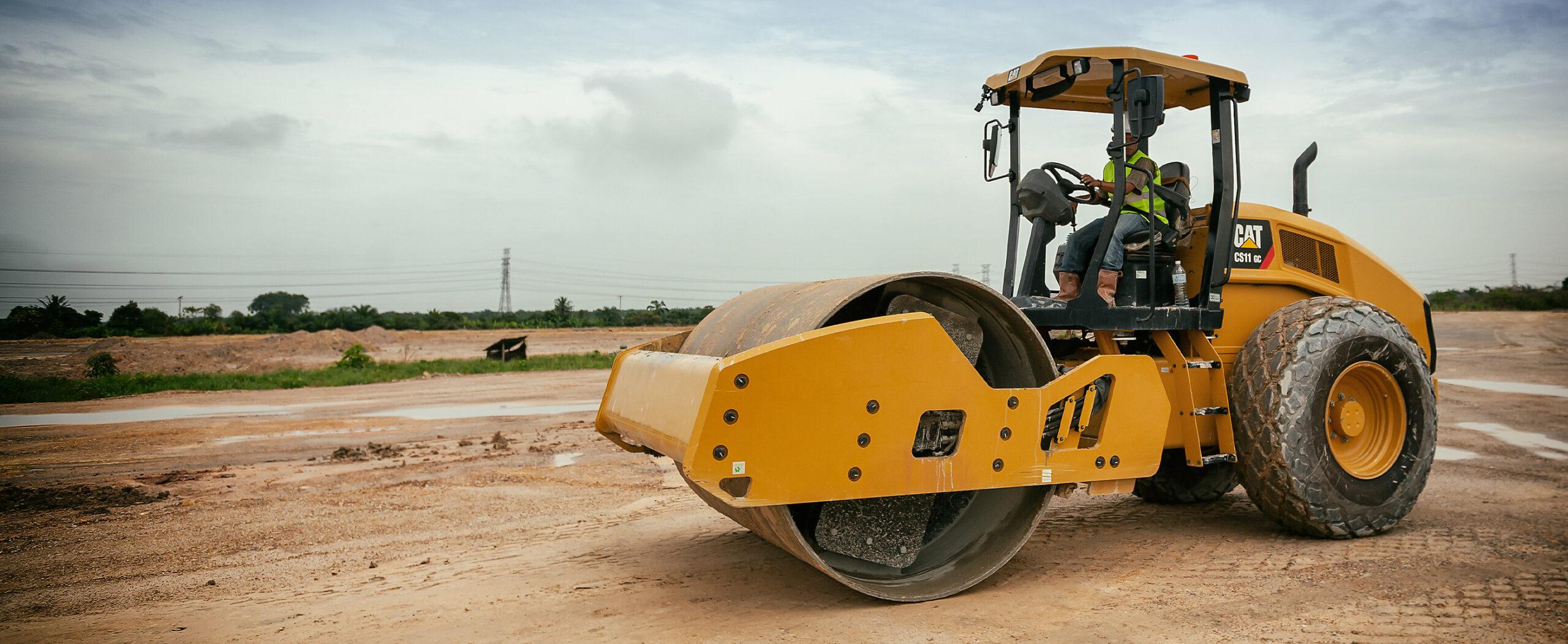
A Soil Compactor
Uses:
- Compressing backfill around foundations, trenches, and tunnels
- Compacting soil prior to placing concrete slabs and pavers
- Settling road base and embankments
- Compacting granular fill for increased load-bearing capacity
- Packing landscaping areas after grading
- Compacting asphalt pavement after initial roller screeding
Proper compaction increases stability and prevents settling when load is applied. Different types of compactors like rollers are tailored for various materials.
5. Scrapers
Motor scrapers rapidly move soil for major earthworks between cuts and fill. The sharp cutting edge rips into the ground, filling the massive bowl with up to 50 cubic yards. The scraper then transports the load to the deposit area.
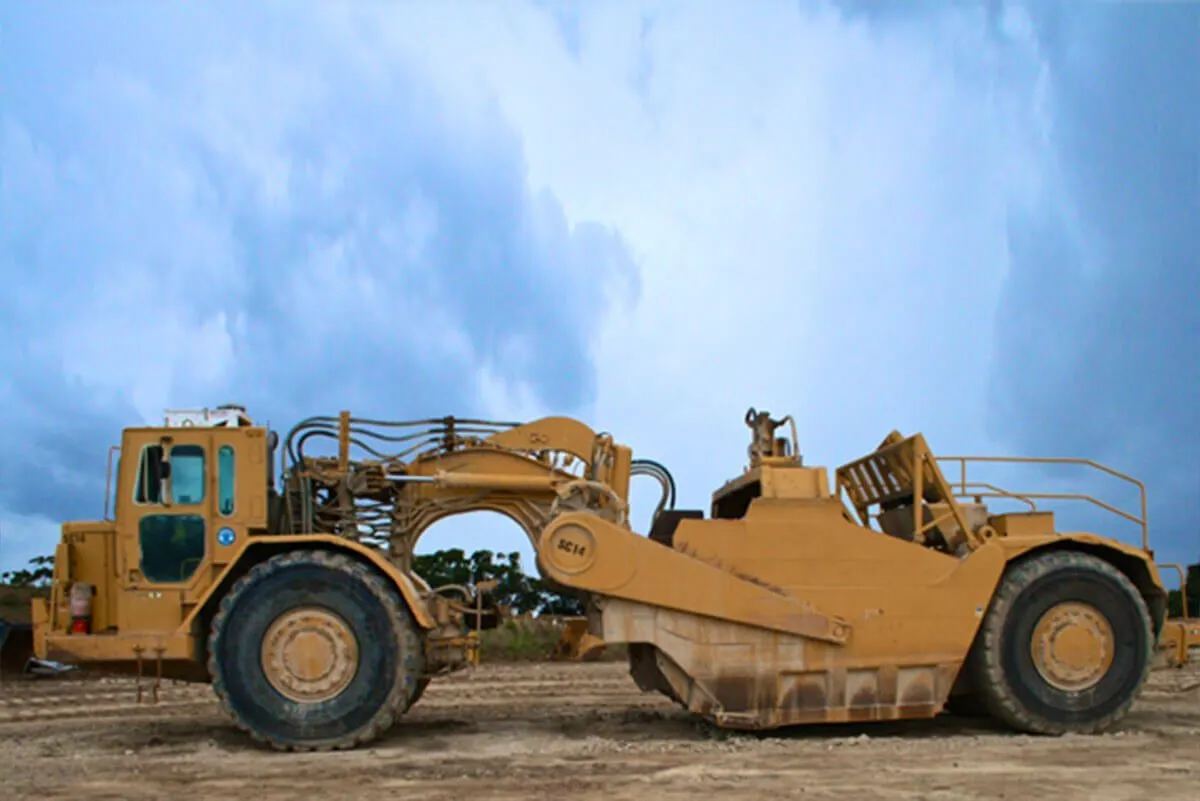
Uses:
- Roadway construction for cutting hills and filling valleys
- Building reservoirs, canals, and levees
- Reclaiming mined/disturbed land by restoring topsoil
- Creating foundations for large commercial sites
- Airport runway construction
- Deep basement excavation
- Large ditch digging and grading
Scrapers excavate, load, haul, spread, and discharge material much faster than loaders and trucks. The largest scrapers exceed 500 horsepower.105 Good Morning My Love Messages
Read Also: Top 10 Agricultural Equipment Manufacturers in Nigeria
6. Graders
Also called road graders or blade graders, these machines consist of a long blade set between the front and rear axles used to flatten surfaces to fine tolerances. The operator controls the blade’s vertical tilt and angle.

Uses:
- Shaping roadbeds during construction for the desired crown
- Spreading gravel and aggregates evenly across roads
- Producing inclines and drainage ditches next to roadways
- Grading pads and cleared sites for buildings
- Smoothing and finishing cuts and fills
- Carving irrigation channels and trenches
- Snow plowing by angling blade
Graders work in concert with other earthmovers to provide exact finished shaping and sloping.
7. Asphalt Pavers
Asphalt pavers evenly and continuously spread and distribute asphalt onto roads, parking lots, runways, tennis courts, bike paths, and other surfaces during resurfacing or new construction. They provide excellent coverage and thickness.200 Romantic Message for Her
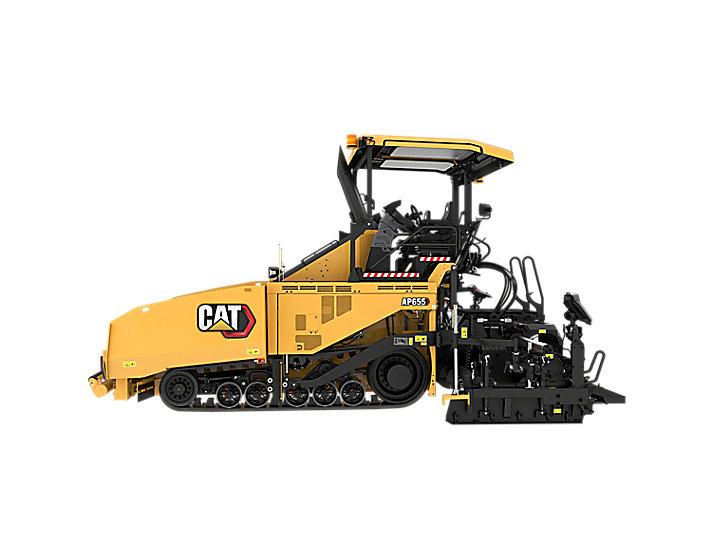
Uses:
- Building new paved surfaces
- Resurfacing deteriorating asphalt
- Patching worn or damaged sections of pavement
- Ensuring desired crown contours and drainage
- Laying durable surfaces for long-term use
- Achieving smoothness specifications for ride quality
- Integration with compactors and rollers for ideal compaction behind the paver
Modern pavers help contractors achieve quality, uniform asphalt surfaces efficiently.
8. Concrete Pavers
Concrete pavers provide automated placement of concrete slabs for sidewalks, patios, driveways, and small roadways. They convey rectangular bricks or blocks from hoppers onto the laying surface, saving immense manual labor.
Uses:
- Constructing sidewalks along municipal roads
- Building outdoor patios at restaurants
- Creating pedestrian plazas and courtyards
- Residential driveway installation
- Walkways on college campuses or public parks
- Road medians and parking areas with interlocking blocks
- Reduced joints compared to pouring large slabs
Concrete paver machines can place 5,000-6,000 blocks per hour, greatly enhancing job efficiency.
Read Also: 20 most common lab equipment names, pictures and their uses
9. Cranes
Cranes employ cables, sheaves, and booms to raise and suspend heavy objects high in the air for positioning. Different types include towers, mobile crawlers, all-terrain, and truck cranes.

Uses:
- Placing roof trusses, steel beams, and columns when erecting buildings
- Installing HVAC components on rooftops
- Lifting precast concrete pieces and masonry
- Loading/unloading shipping containers and vehicles
- Moving supplies/tools around sites
- Servicing tall structures like wind turbines
- Building bridges by lifting sections
- Demolition by dropping material
Tower cranes provide long-term use on major projects, while mobile cranes offer versatility. Telescopic booms extend for increased capacity and reach.
10. Telescopic Handlers
Telescopic handlers, also called telehandlers, utilize a telescoping boom that can reach upwards to lift and place loads at heights over 50 feet depending on the model. The boom provides a vertical range similar to a crane.
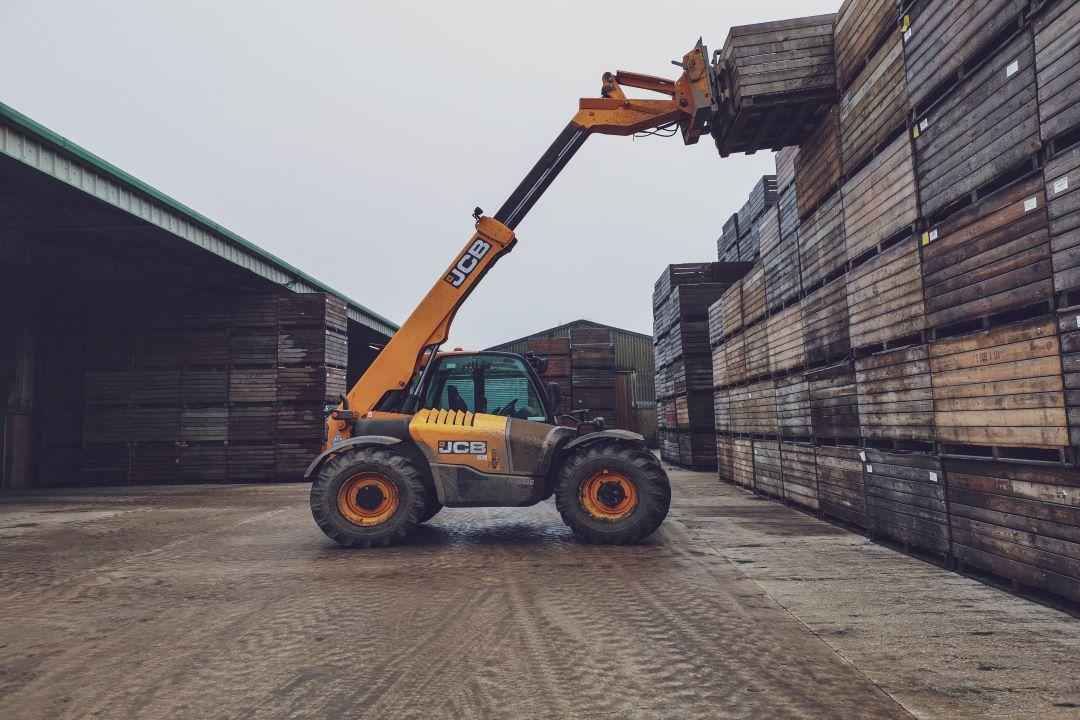
Uses:
- Delivering tools, parts, and equipment to workers aloft
- Placing loads on top-floor shelving in warehouses
- Transporting and lifting palletized material
- Lifting drywall sheets up for installation
- Masonry activities like positioning blocks and bricks
- Building maintenance like facade repairs
- Landscaping through material handling
- Agricultural handling like moving hay bales
With rugged tires or tracks, telehandlers access difficult terrain. Their lifting versatility suits many applications.
11. Dump Trucks
Featuring an open cargo bed that hydraulically tilts up to dump material, dump trucks are a ubiquitous sight transporting loads on construction projects. Front, rear, and bottom dumps models exist.NYSC Portal
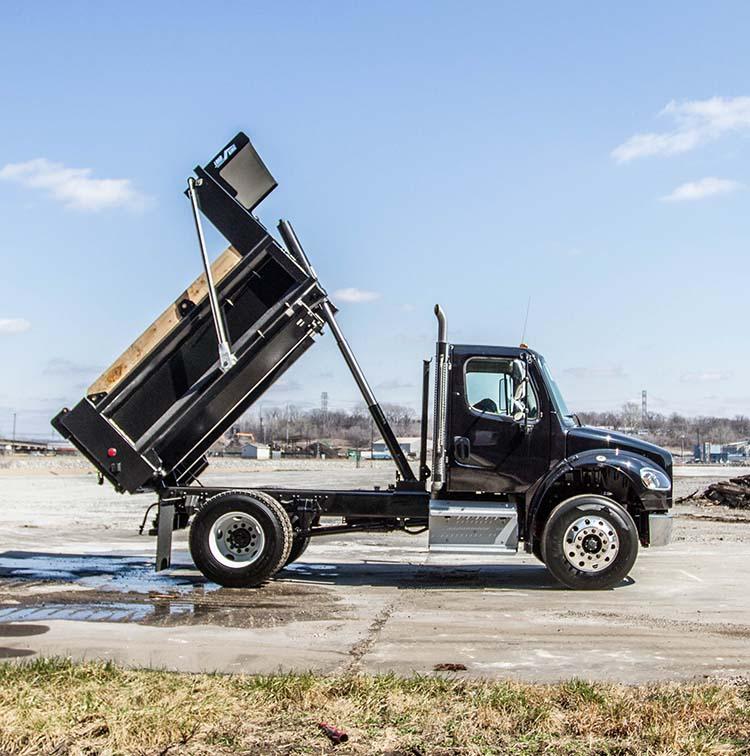
Uses:
- Hauling rock and aggregates from quarries to sites
- Transporting dirt or debris from grading/excavation areas
- Moving sand, gravel, and landscape supplies to installers
- Carrying concrete to construction zones
- Removing excavated earth from trenches and foundation digs
- Taking waste material to landfills
- Distributing salt for winter road maintenance
Articulated and off-road dump trucks provide increased maneuverability and traction where needed.
Read Also: Top 10 Road Construction Companies in the World
12. Loaders
Loaders utilize front-mounted buckets and lift arms to scoop, lift, and dump loose material. Their high productivity makes loaders well-suited for charging or feeding other equipment.
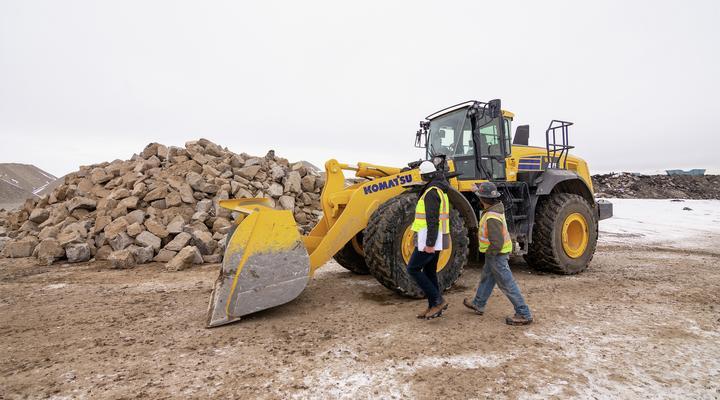
Uses:
- Loading aggregates like gravel into dump trucks
- Charging hoppers with sand and stone at quarries
- Stockpiling salt and minerals at mines
- Moving dirt, rubble, or demolition debris
- Landscaping activities like carrying trees and plants
- Transferring grain into silos and wagons
- Cleaning up spills rapidly
- Removing snow in winter
Variations like wheel and skid steer loaders offer increased maneuverability in tight spaces.
13. Trenchers
Trenchers rapidly dig narrow trenches for underground infrastructure like pipes, cables, wiring, drainage, or irrigation lines. The digging chain or wheel with carbide teeth rotates to grind through soil and carve out long straight trenches with precise widths and depths.
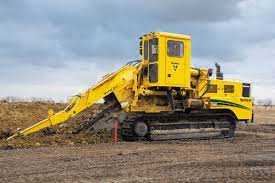
Uses:
- Installing underground pipelines for water, gas, sewage, etc. Trenchers dig ditches for laying pipe networks.
- Electrical and telecom wiring burial. Trenchers excavate trenches for burying power lines, fiber optic cables, and other wiring.
- Subsurface drainage system construction. Trenchers dig channels for drainage pipes beneath fields, roads, or structures.
- Irrigation ditch creation. Trenchers excavate irrigation ditches and channels in agricultural applications.
- Utility line repairs and maintenance. When accessing buried utility lines for repairs, trenchers uncover sections quickly and safely.JAMB Portal
Trenchers are commonly used when installing pipelines, electrical conduits, telecommunications cabling, subsurface drainage systems, and other vital underground municipal and civil engineering projects.
Read Also: Top 15 Washing Machines with Durable Construction in Nigeria
14. Motor Graders
Motor graders, also called blade graders, accurately grade areas to final tolerance using the long moldboard blade between axles. Operators finely angle and raise/lower the blade.
Uses:
- Shaping roadbeds and crowns for drainage
- Producing inclines and ditches alongside roads
- Spreading and leveling loose aggregate on roads
- Finishing pads and cleared sites prior to building
- Cutting precise trenches for irrigation channels
- Plowing snow by angling blade
- Cutting soft earth like dirt or mud
Graders work in conjunction with scrapers, dozers, and other graders to provide finished ground surfaces.
Conclusion
From digging foundations to paving highways, heavy construction equipment encompasses the machines that perform the hard work to build major infrastructure and developments. Earthmovers, lifters, haulers, pavers, and more amplify human productivity immensely through mechanical muscle power. Operators expertly marshal fleets of specialized heavy equipment to reshape the landscape and construct the structures supporting modern life.
Check: JAMB Result
Check and Confirm: How Much is Dollar to Naira


